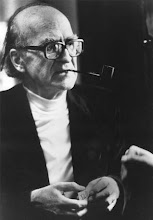The Three Pipe Problem
Of course pipe smoking is a significant part of both the Sherlock Holmes and Lord of the Rings (LTOR) canons. Still, with the anti-smoking gestalt today, why are movies including pipe smoking in the modern depictions? Certainly traditional pipe smokers identify with the Sherlock Holmes stories and many pipe smokers become "Holmesians" or those who study the Holmes cannon. Many pipe clubs, like the Sherlock Holmes Pipe Club of Boston, tie their identity to Holmes and Watson as the define themselves as pipe smokers. Some even emulate Holmes when they describe the severity of problems as taking one, two or three pipes to solve:
“As a rule,” said Holmes, “the more bizarre a thing is the less mysterious it proves to be. It is your commonplace, featureless crimes which are really puzzling, just as a commonplace face is the most difficult to identify. But I must be prompt over this matter.”
“What are you going to do, then?” I asked.
“To smoke,” he answered. “It is quite a three pipe problem, and I beg that you won’t speak to me for fifty minutes.” He curled himself up in his chair, with his thin knees drawn up to his hawk-like nose, and there he sat with his eyes closed and his black clay pipe thrusting out like the bill of some strange bird. I had come to the conclusion that he had dropped asleep, and indeed was nodding myself, when he suddenly sprang out of his chair with the gesture of a man who has made up his mind and put his pipe down upon the mantelpiece.[1]
Perhaps fans of both Sherlock Holmes and LOTR represent niche groups or subcultures of geekdom (a collection of people who avidly follow and/or consume a certain genre or hobby) that have simply edged closer to mainstream consciousness. In order to attract the longterm fan of these stories, these movies use pipes as rhetorical touchstones to identify the film adaptations with these enthusiasts. Certainly pipes are identified with other subcultures of geekdom.
The Steampunk Pipe
Recently, the steampunk aesthetic is gaining in popularity. This genre has been showcased on episodes of Castle and many consider the recent Sherlock Holmes movies to be part of the steampunk movement. Definitions of steampunk are contested but overall it seems to be a retro-futuristic sub-culture of science fiction that focuses on an alternate Victorian Era history and steam power. A good explanation of this definition problem is found on Steampunk.com:
To me, Steampunk has always been first and foremost a literary genre, or least a subgenre of science fiction and fantasy that includes social or technological aspects of the 19th century (the steam) usually with some deconstruction of, reimagining of, or rebellion against parts of it (the punk). Unfortunately, it is a poorly defined subgenre, with plenty of disagreement about what is and is not included. [2]
Because steampunk identifies with Victorian England, many people who participate in this aesthetic use pipes to represent steampunk. Certainly many people smoked pipes during this era; in fact the Sherlock Holmes stories took place in Victorian London. Yeah, it was a good time to be a pipesmoker and many of the pipe styles we see today were originally shaped and defined during this time.
Often steampunk participants will use traditional briar, meerschaum or calabash pipes to define their characters but some pipe makers are experimenting with the genre in their pipecraft. For instance, this pipe was made by Nate King who enjoys the steampunk genre. Although he designed this pipe earlier, a steampunk author purchased this pipe and is going to incorporate it into his illustrations [3]. Nate is now looking at expanding his steampunk pipes into other styles and shapes; personally, I am looking forward to see how he incorporates gears into his designs.Steampunk pipes seem to function in a similar manner to that of those portrayed in Sherlock Holmes and LOTR movies: they function as rhetorical touchstones that point the attention of the observer to those worlds created by the participants of the respective worlds. However, pipes are appearing more often in movies outside of these genres. Why is this?
The Hipster Pipe
Hipsters are becoming more popular in the USA. This group, once seen as a small sub-culture, is growing. More movies are being made depicting hipsters as mainstream or at least equal to being a young adult today. Hipsters are considered easy to recognize and are defined as:
America does have a long love affair with being hip — not only up to date and au courant, but ahead of the curve. The Urban Dictionary defines hipsters as "a subculture of men and women typically in their 20s and 30s who value independent thinking, counter-culture, progressive politics, an appreciation of art and indie-rock, creativity, intelligence, and witty banter." [4]
Apparently, many feel that hipsters are rejecting cigarettes and turning more and more to pipes. Pipes are turning up more and more in pictures of hipsters found at various websites like LATFH. Certainly "drug-treatment" organizations are taking notice:
While parents were busy warning against the dangers of cigarettes, two new dangerous habits have snuck in, drawing the attention of teens and young adults. Hookahs and pipes are finding popularity among a new generation of hipsters who think the habits are less dangerous. [5]
Traditionally, many pipe smokers can identify with some elements of the hipster. Pipe smokers are often seen as being more intelligent, independent, and even counter-cultural. However, many hipsters may be adopting pipe smoking because it is "so not cool it is cool." In this way, the pipe serves as a rhetorical touchstone that invokes images of Ward Cleaver or even Hugh Hefner circa 1960 but in ironic ways. In other words, the hipster pipe may serve as an ironic iconoclast to modern pop culture by reframing past cultural memory of 1955 in ways that are seen as individualistic or independent rather than collective norm.
The Rhetorical Pipe
Certainly pipes and pipe smoking is increasing in the public awareness through film. Whether or not these appearances are tailored for specific sub-cultures within American pop culture, pipes do serve as rhetorical artifacts within film, literature, and other media today. Pipes can set the mood of a scene, sell the authenticity of a character, identify with a specific genre or world, or even serve as a way to reject modern culture. It can invoke a sense of nostalgia or fantasy for the observer. For many, it is a defining characteristic of a chosen lifestyle. When you, O' Gentle Reader, see a pipe or pipe smoker, what do you think? What do you feel? How does it affect your life?
-Safari Bob
References[1] The Red Headed League by Conan Doyle
[2] http://www.steampunk.com/what-is-steampunk/
[3] http://www.natekingpipes.com/2011/12/13-11-gear-punk/
[4] http://www.npr.org/2011/11/16/142387490/the-hipsterfication-of-america
[5] http://www.thecyn.com/drug-treatment/hipsters-turn-to-hookahs-pipes.html








